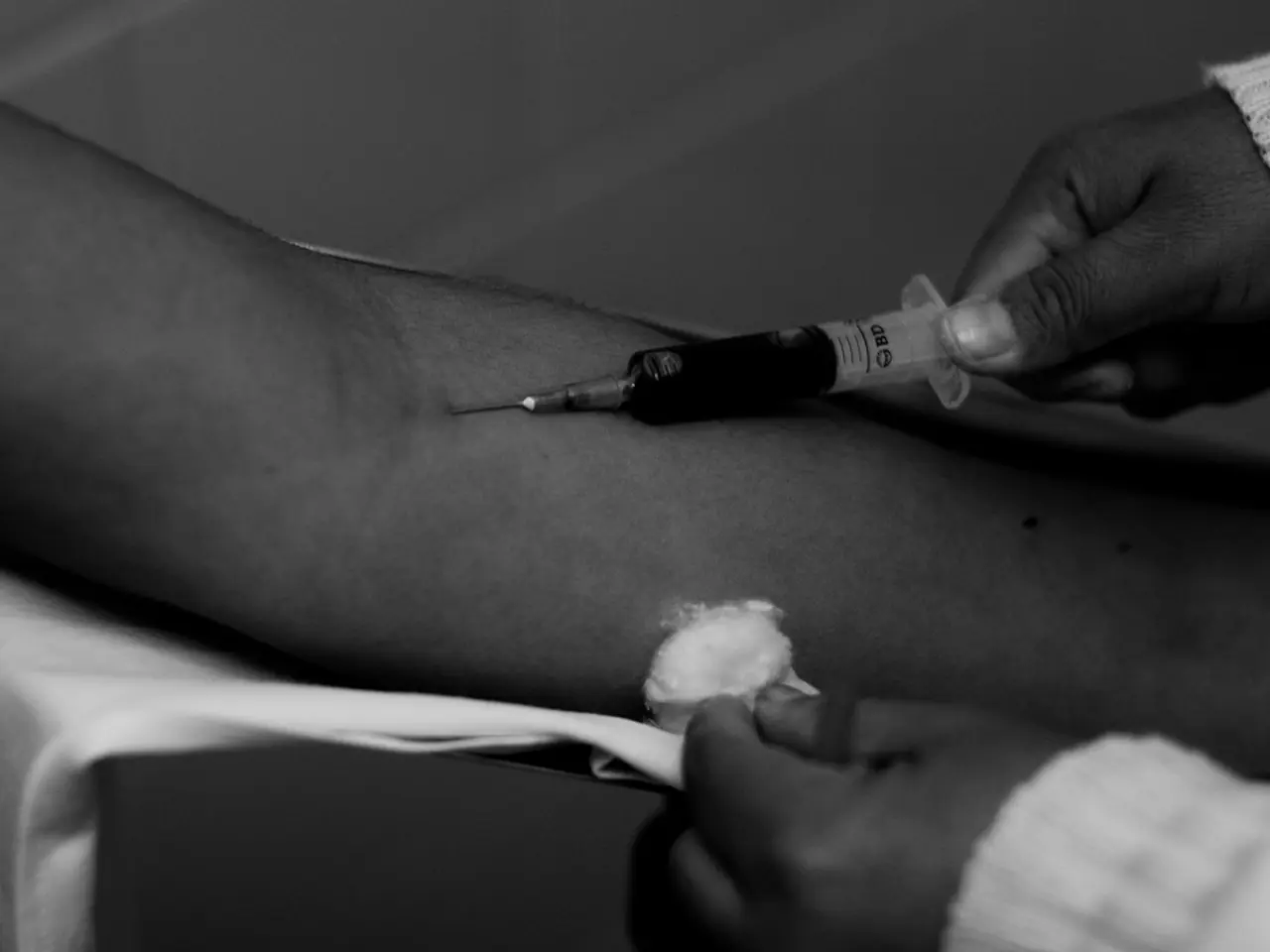Contemplating Bladder Botox Injections: A Potential Solution for Urinary Issues?
Incontinence and overactive bladder (OAB) are common conditions that can significantly impact quality of life. Fortunately, there are multiple treatment options available, one of which is Botox injections into the bladder.
Botox, more formally known as onabotulinumtoxinA, is an effective treatment for OAB symptoms and incontinence. Clinical trials and patient reports indicate that Botox injections into the bladder muscle result in an average reduction of about 3 leakage episodes per day, compared to about 1 fewer leak with a placebo. Many patients experience up to a 50-75% reduction in daily leakage episodes, with most requiring only two treatments per year [1][3][4].
The Botox procedure is a minimally invasive outpatient treatment, typically performed in a urologist’s office. Patients receive local anesthesia, numbing agents, or sedatives for comfort, and the procedure usually takes under 30 minutes. Afterward, patients are monitored briefly to ensure they can empty their bladder before going home [3].
Common side effects include urinary tract infections (UTIs) and difficulty urinating, which can lead to urine retention requiring temporary catheterization. There is also a rare but serious risk of autonomic dysreflexia, a potentially life-threatening nervous system reaction with symptoms such as high blood pressure, sweating, and muscle spasms, especially in those with spinal cord injuries [2].
Mild discomfort or stinging during urination after the treatment is common but usually temporary [3][4]. It is important to note that Botox is not a cure, and occasional issues with urinary incontinence or OAB may still occur.
The full effects of bladder Botox injections are expected by week 12, according to the makers of Botox. In some cases, people may need temporary catheterization due to urinary retention as a side effect. Urinary retention is a temporary side effect that occurs in about 5-8% of patients who receive bladder Botox injections [1].
Before getting Botox injections, certain conditions may disqualify a person. These include a symptomatic urinary tract infection, a risk or history of enlarged prostate, difficulty emptying the bladder without a catheter, bleeding disorders or use of blood thinners, breathing problems like asthma or emphysema, unwillingness or inability to self-catheterize, use of muscle relaxers, pregnancy or nursing, recent surgery, side effects from other botulinum toxin products, conditions affecting muscles or nerves like ALS or myasthenia gravis, and more [2].
Botox, known for its cosmetic uses, has also found a place in the medical field. It works by chemically affecting muscle-nerve connections, which is why it can also be used to treat other disorders like chronic migraine and severe underarm sweating [4].
In summary, Botox provides significant relief for OAB and urinary leakage with a manageable side effect profile, primarily involving urinary retention and infections. The treatment is minimally invasive, outpatient, and repeated roughly twice a year for sustained benefits [1][3].
References:
[1] American Urological Association. (2021). Botulinum Toxin A for the Treatment of Overactive Bladder and Urinary Incontinence. [online] Available at: https://www.auanet.org/guidelines/overactive-bladder-botulinum-toxin-a
[2] National Institutes of Health. (2021). Overactive Bladder - Topic Overview. [online] Available at: https://medlineplus.gov/ency/article/000742.htm
[3] Mayo Clinic. (2021). Bladder Botox injections. [online] Available at: https://www.mayoclinic.org/tests-procedures/bladder-botox-injections/about/pac-20385465
[4] International Foundation for Functional Gastrointestinal Disorders. (2021). Bladder Botox Injections. [online] Available at: https://www.iffgd.org/disorders/bladder-botox-injections/
- Botox, a treatment for overactive bladder (OAB) and incontinence, reduces daily leakage episodes by an average of 3 times per day compared to a placebo.
- The Botox procedure is a minimally invasive outpatient treatment, typically performed in a urologist’s office, lasting under 30 minutes.
- Common side effects include urinary tract infections (UTIs), difficulty urinating, and temporary urinary retention requiring a catheter.
- Botox is not a cure, occasional issues with urinary incontinence or OAB may still occur, and some patients may require temporary catheterization.
- The full effects of bladder Botox injections are expected by week 12, but people may experience urinary retention as a side effect.
- Conditions such as a urinary tract infection, enlarged prostate, bleeding disorders, asthma, pregnancy, and more may disqualify a person from receiving Botox injections.
- In addition to cosmetic uses, Botox is also used in the medical field to treat disorders like chronic migraine, severe underarm sweating, and other muscle-nerve conditions.




